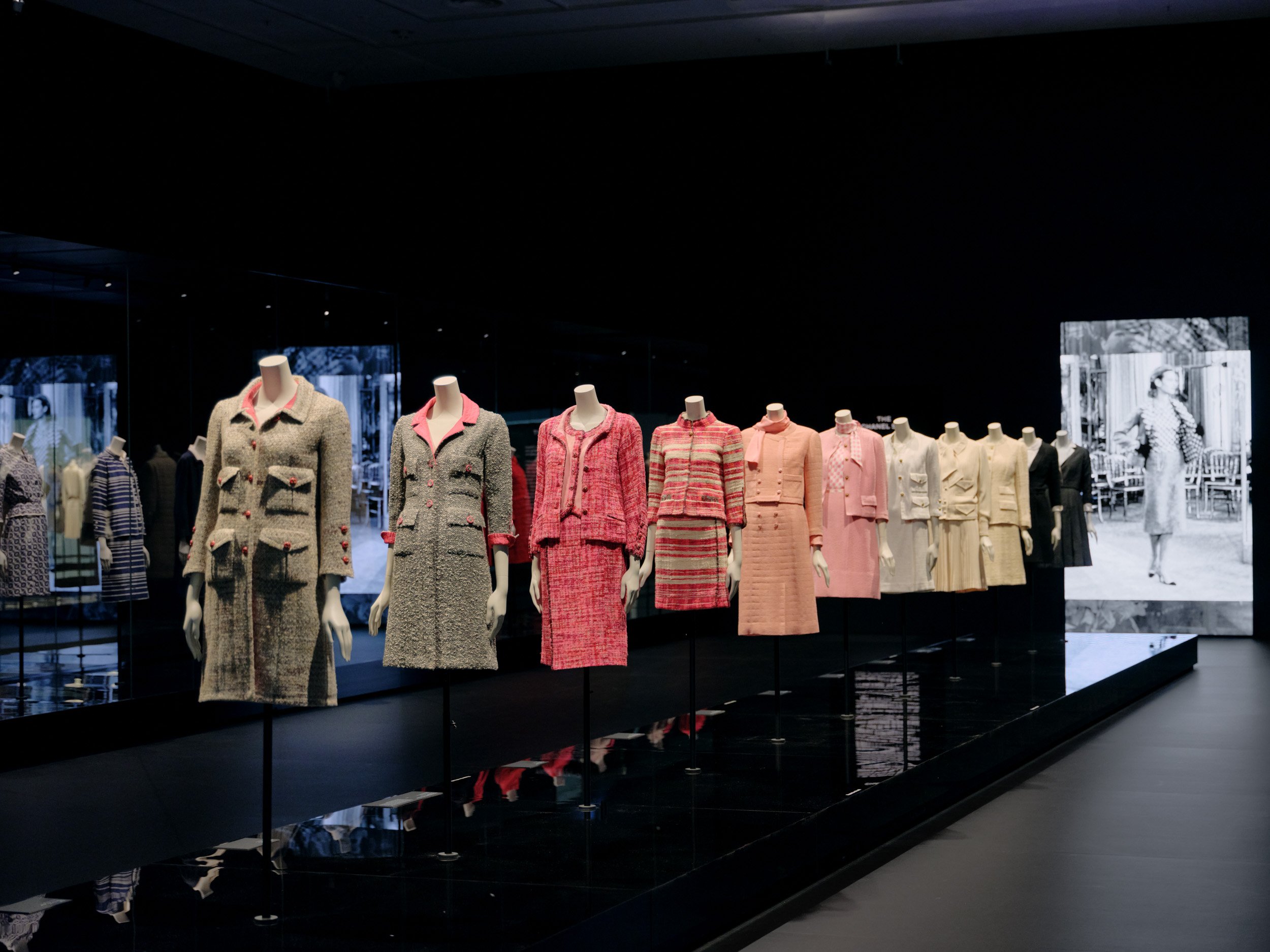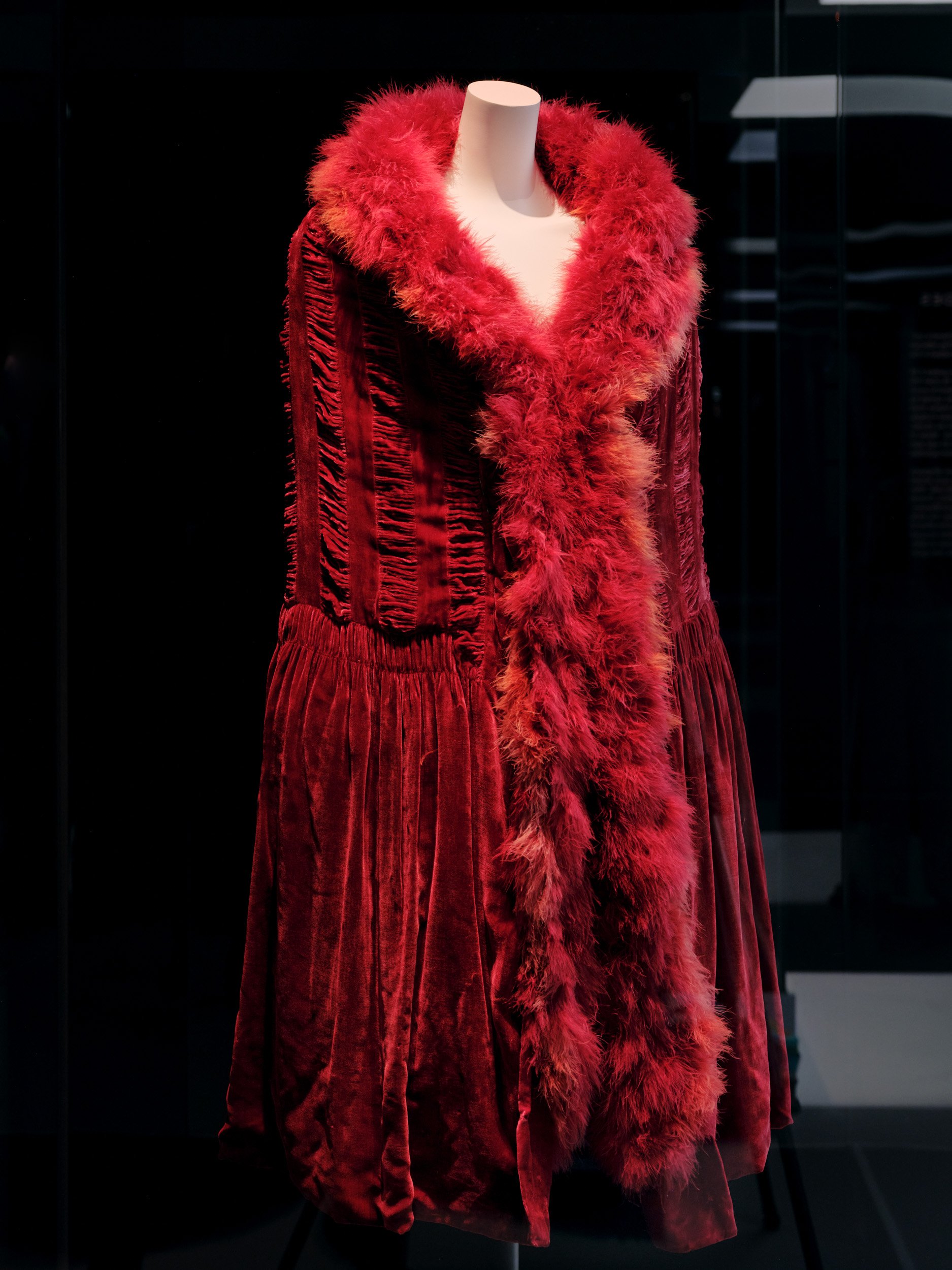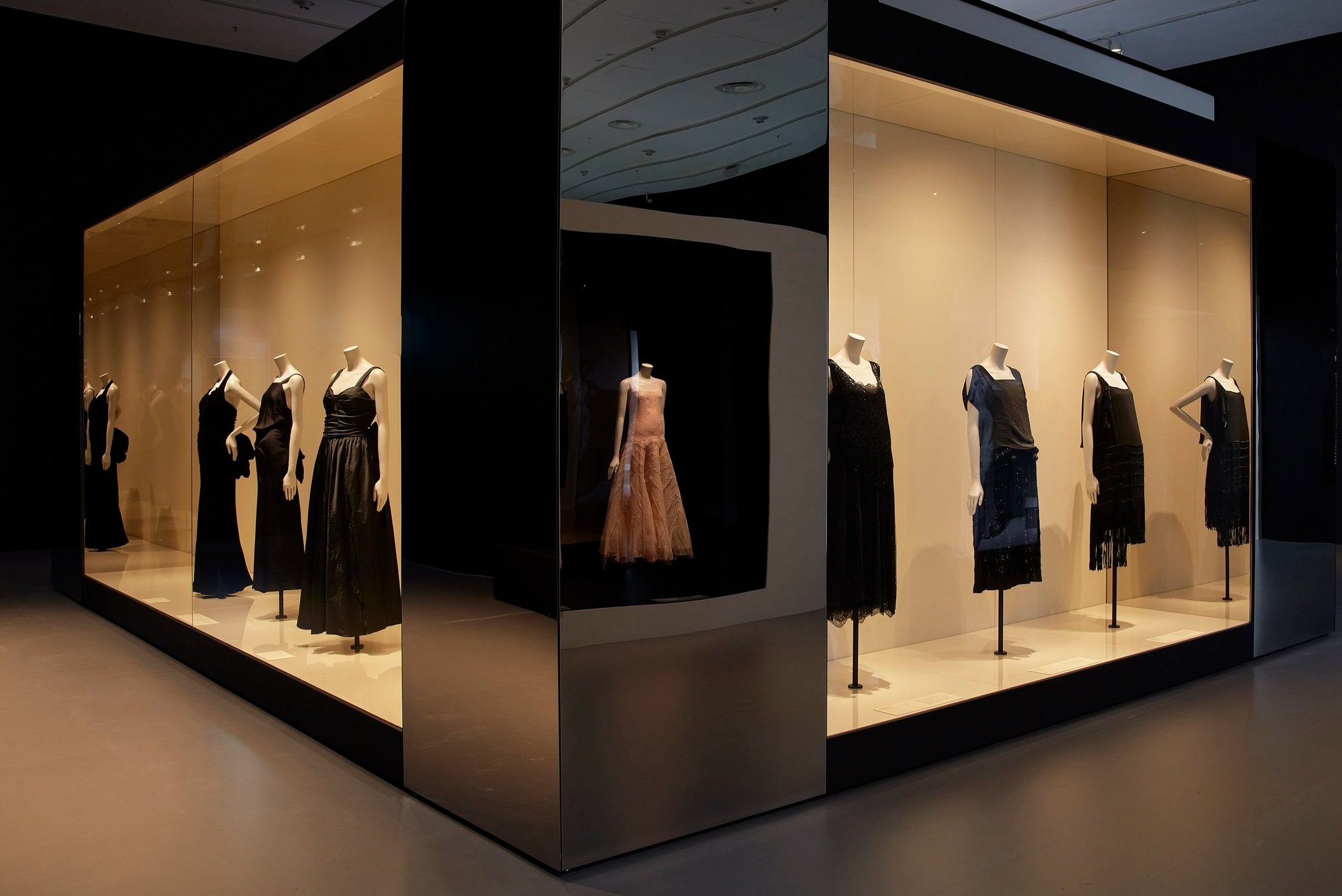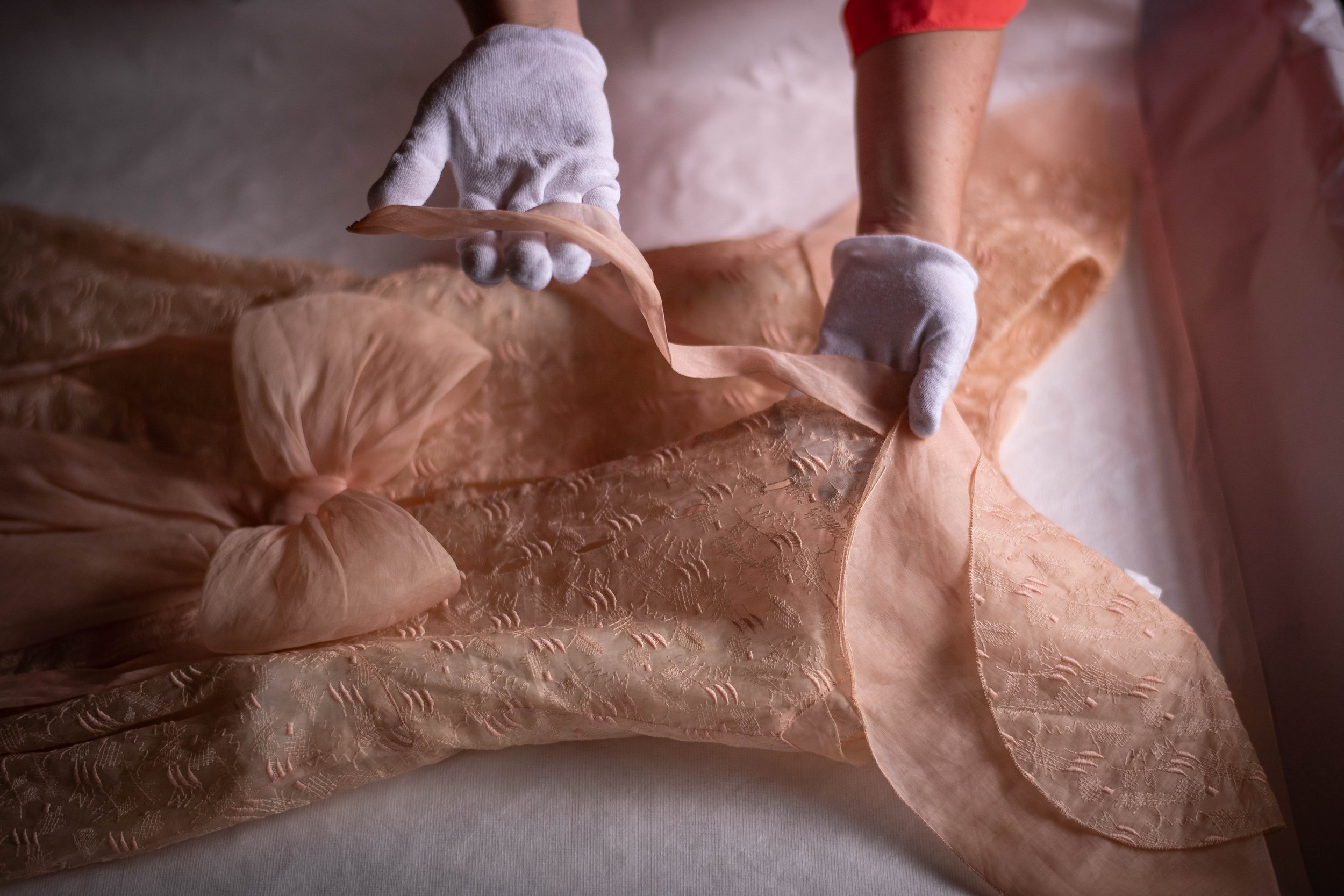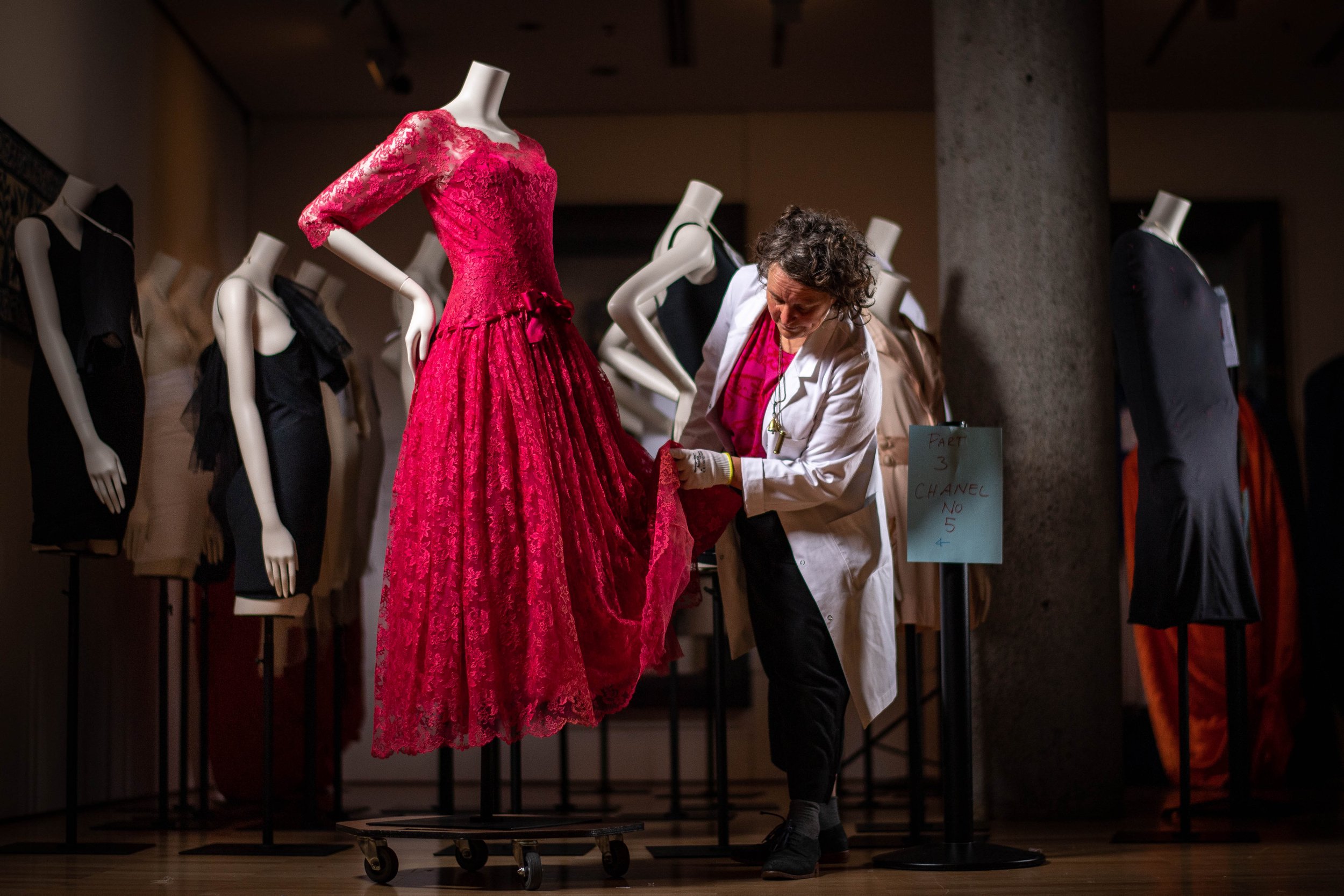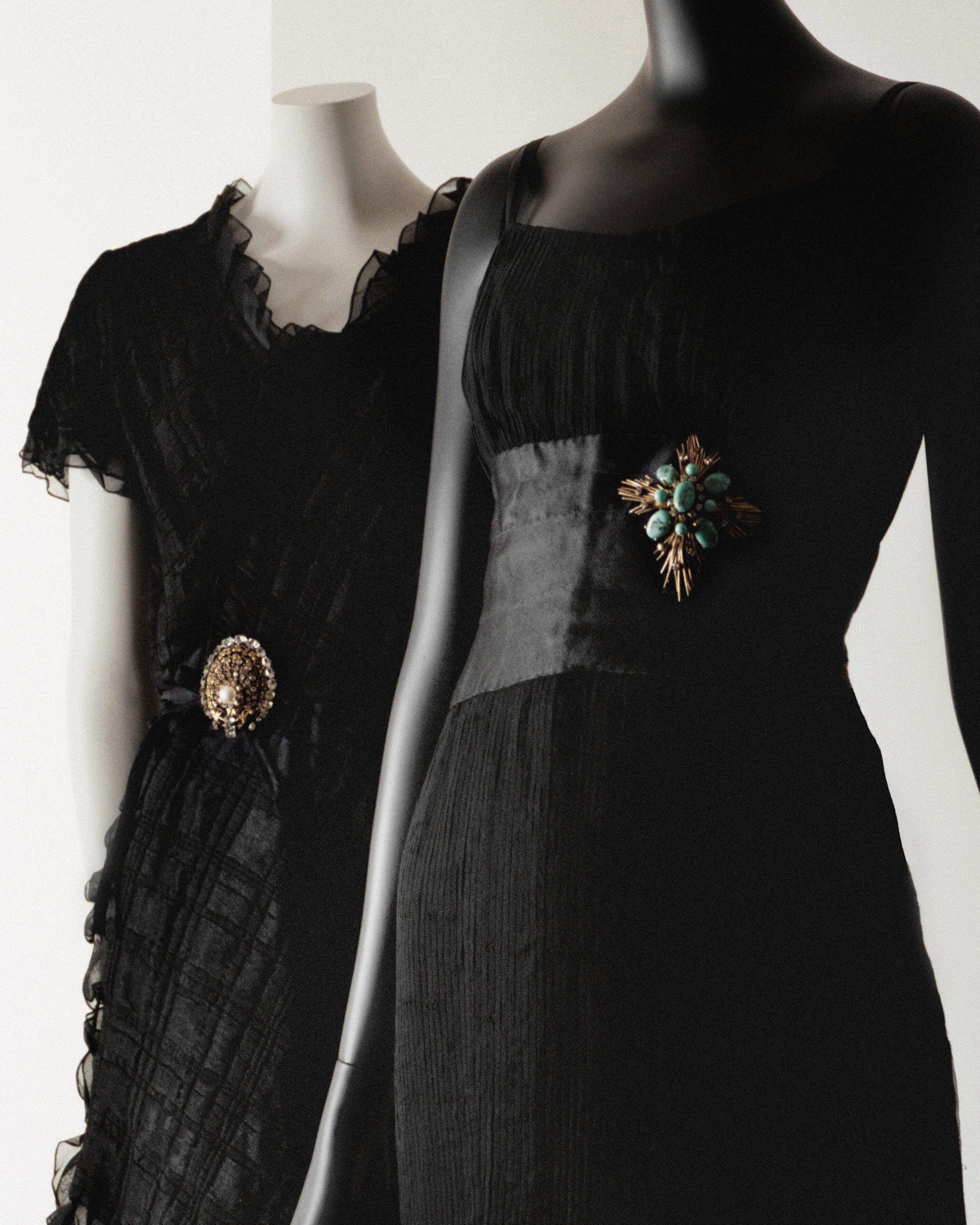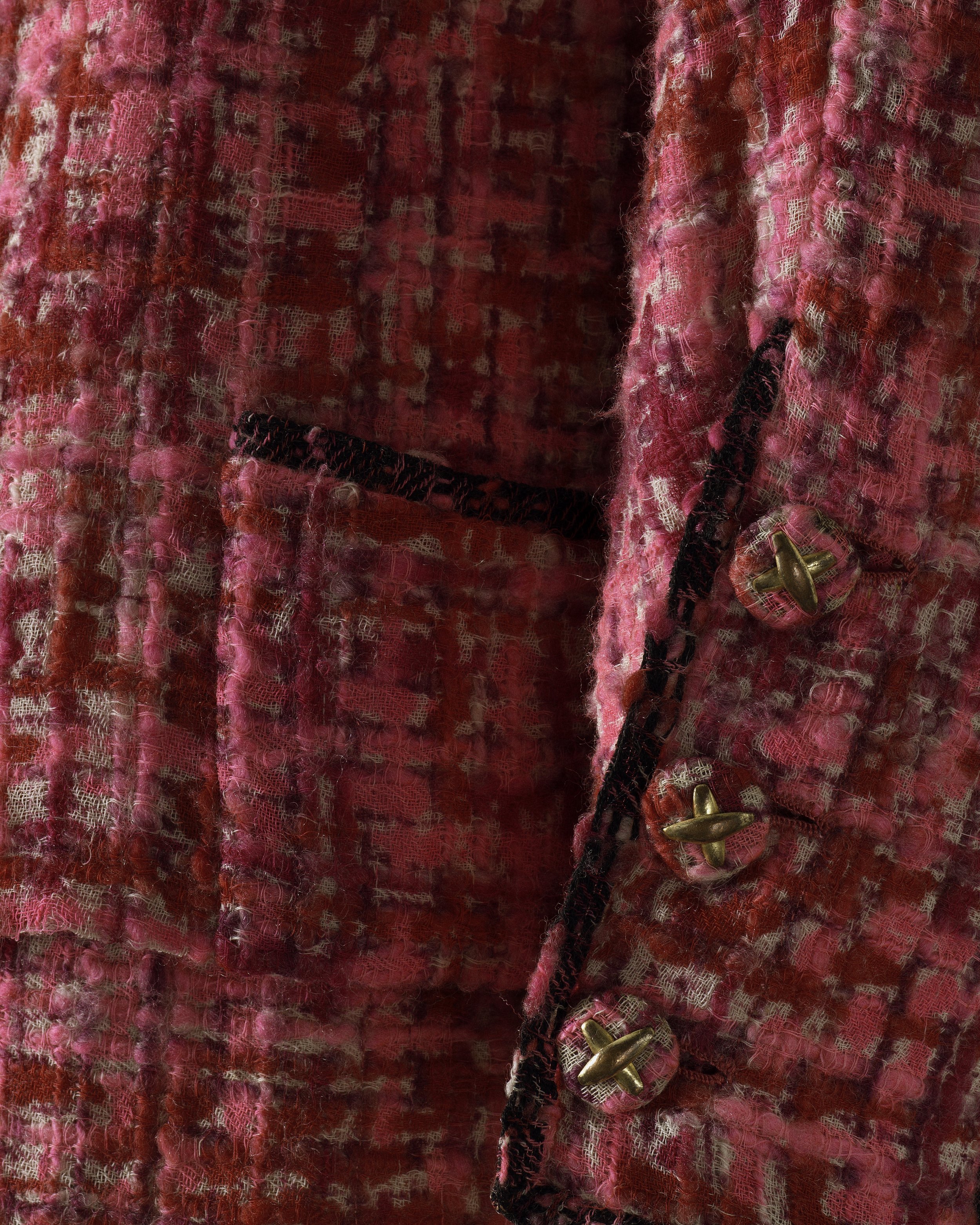Gabrielle Chanel. Fashion Manifesto in Melbourne
Gabrielle Chanel. Fashion Manifesto, focused on the significant contribution to twentieth-century fashion culture by the Gabrielle Chanel (1883–1971), showcasing the impressive breadth of the French couturier’s output and her design codes.
Running until 25 April 2022 at the NGV in Melbourne, Australia, the exhibition includes never-before-seen acquisitions generously gifted by Krystyna Campbell-Pretty AM and Family, including an embroidered organdie evening dress, spring-summer 1933 and spectacular shirred red silk velvet and marabou-lined Evening cape, c. 1924–26 (left). Highlights of the exhibition include rare examples of Chanel’s early daywear and her wool jersey suits, which marked a radical departure from the elaborate fashions of the Belle Epoque and Edwardian periods in France and England.
Considered to be one of the most influential designers of the twentieth century, Gabrielle Chanel introduced a language of modernity into fashion that still resonates today. With the opening of her first fashion boutique in Deauville in 1912, then her couture house on 31 Rue Cambon in Paris in 1918, Chanel began to reform women’s wardrobes by creating a new code of dress that privileged comfort, function and elegance, and responded to the growing desire for greater social freedoms among women.
Her designs offered a restrained luxury that rejected ornamentation and, above all else, allowed women to move with ease. She pioneered the use of jersey and tweed, drawing inspiration from menswear and sportswear conventions, and championed the ‘little black dress’ and the suit as liberating modes of dress for women.
Highlights include early examples of her use of black to connote modernity and chic; delicate lace gowns; wool jersey and tailored tweed suits; dazzling beaded garments; and bold costume jewellery. The survey offers audiences an unprecedented opportunity to appreciate Chanel’s significant impact on the development of womenswear throughout the twentieth century, and to consider the legacy of her designs in contemporary culture.
Equally captivating are the gowns associated with Chanel’s so-called ‘romantic’ period of the 1930s. Dedicated sections of the exhibition showcase Chanel’s love and use of floral motifs - realised as printed textiles or as appliqued florets – and her skilfully manipulated lace eveningwear.
Chanel’s innovations also included the first composite and abstract perfume, Chanel N°5, created in 1921; cosmetics and highly decorative costume jewellery that combined precious and semi-precious materials. The exhibition also explores the design codes Chanel introduced in the 1950s, including the quilted 2.55 bag and two-tone slingback that remain closely associated with the visual language of the house.
A further highlight of the exhibition is a display of iconic Chanel suits. Debuted by Chanel in the 1910s and reintroduced after the re-opening of her haute couture house in 1954, the two or three-piece suit, in lightweight woven tweed or wool bouclé, remains a feature of the house’s collections to this day. Popularised by the likes of First Lady Jacqueline Kennedy, Princesse Grace de Monaco and actresses such as Marlene Dietrich, Romy Schneider and Lauren Bacall, the Chanel suit quickly became the embodiment of sophistication and functionalism, defined by its tailored lines, allowance for ease of movement and comfort, and clever use of gilt buttons and braiding as means of both decoration and structure.
